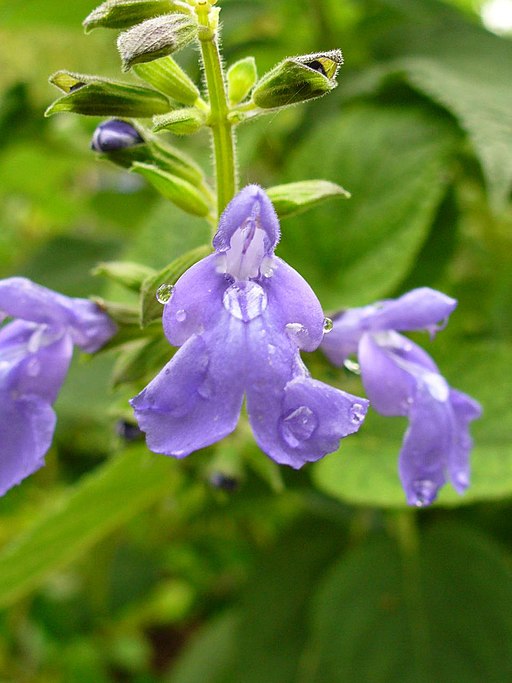Classification System: APG IV
Superregnum: Eukaryota
Regnum: Plantae
Cladus: Angiosperms
Cladus: Eudicots
Cladus: Core eudicots
Cladus: Asterids
Cladus: Lamiids
Ordo: Lamiales
Familia: Lamiaceae
Subfamilia: Nepetoideae
Tribus: Mentheae
Subtribus: Salviinae
Genus: Salvia
Subgenus: S. subg. Calosphace
Sectio: S. sect. Uricae
Species: Salvia urica
Name
Salvia urica Epling, Repert. Spec. Nov. Regni Veg. Beih. 110: 175 (1939).
Distribution
Native distribution areas:
Northern America
Mexico
Mexico Southeast.
Central America
Belize, El Salvador, Guatemala, Honduras, Nicaragua.
References: Brummitt, R.K. 2001. TDWG – World Geographical Scheme for Recording Plant Distributions, 2nd Edition
References
Additional references
Nelson Sutherland, C.H. 2008. Catálogo de las plantes vasculares de Honduras. Espermatofitas. xxix + 1576 pp. SERNA/Guaymuras, Tegucigalpa, Honduras. ISBN 978-99926-44-80-5 Reference page.
Villaseñor, J.L. 2016. Checklist of the native vascular plants of Mexico. Revista Mexicana de Biodiversidad 87: 559–902. DOI: 10.1016/j.rmb.2016.06.017 Online PDF Reference page.
Links
Govaerts, R. et al. 2021. Salvia urica in World Checklist of Selected Plant Families. The Board of Trustees of the Royal Botanic Gardens, Kew. Published online. Accessed: 2021 January 13. Reference page.
International Plant Names Index. 2021. Salvia urica. Published online. Accessed: 13 January 2021.
Salvia urica is a herbaceous perennial native to the mountains of Guatemala, Honduras, Belize, and Chiapas, Mexico. It is reportedly most common in Guatemala, where it grows in a wide variety of habitats from 1,000 to 8,000 feet (300 to 2,440 m) elevation, in a mild and moist climate. The specific epithet, urica, means "caterpillar" or "cankerworm", possibly describing the tight whorls of flowers, calyces, and bracts before they open.[1]
Salvia urica grows up to 4 feet (1.2 m) in height and width, with the stems, leaves, and calyces all covered in long white hairs. Glands on the soft-textured leaves give off a slight pleasant aroma when brushed. The leaves are deltoid and 2 to 6 inches (5.1 to 15.2 cm) long, with slightly saw-toothed edges. The rich blue-violet flowers are 0.5 inches (1.3 cm) long, with 3–6 in each whorl, and held by green calyces. The flower's upper lip is narrow with short hairs, while the lower lip is wider with white markings.[1]
Notes
Clebsch, Betsy; Barner, Carol D. (2003). The New Book of Salvias. Timber Press. p. 198. ISBN 978-0-88192-560-9.
Retrieved from "http://en.wikipedia.org/"
All text is available under the terms of the GNU Free Documentation License


